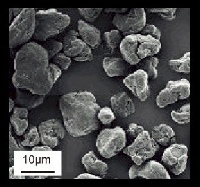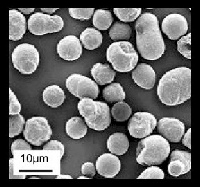Toner is an essential material for a laser printer and a copying machine
 In a laser printer or copier, image is formed by the toner that adheres to the OPC (organic photoconductor) drum. First, the OPC drum is charged, then a laser light is exposed on imaging area of the drum to discharge the surface potential forming a latent image. Toners adhere to the latent image on the OPC drum, which is then transferred to a paper
In a laser printer or copier, image is formed by the toner that adheres to the OPC (organic photoconductor) drum. First, the OPC drum is charged, then a laser light is exposed on imaging area of the drum to discharge the surface potential forming a latent image. Toners adhere to the latent image on the OPC drum, which is then transferred to a paper
Copier toner is a chemical solution used to develop xerographic images; put simply, it's the solution that allows laser printers to print. Many industrial laser-based printers and photo copiers in office environments use toner, which comes in a large plastic cartridge. Fine powder and pigment compose the core elements of toner, though many other ingredients accent these basic components. Each toner cartridge contains varying ratios of ingredients, as per the individual needs of the copier.
What is Toner Powder
The powder mixture contained in a copier's toner cartridge is actually what the term "toner" refers to. Ultimately, toner powder is the main ingredient in copier toner. Before understanding why copier toner contains the ingredients it does, it's important to know how toner powder works. This extremely fine powder, which has a consistency akin to talcum powder, gains an electric charge when it comes in contact with the copier's rotating drum. The copier's laser beam then removes the charge from the previously charged areas of the drum, leaving certain areas free to be coated with toner. The drum rolls over a sheet of paper with certain areas coated in toner, creating an image. Various mixed ingredients compose toner powder, in turn making up miniscule particles generally ranging in size from five to 15 microns—a millionth of a meter—around.
From early physical grinding of toner to the introduction of chemically formulated toners in 1998 .
So, what is the difference between traditional physical toner and chemical toner? What are the advantages of chemical toner?
Toner type
 Physical (Ground) Toner
Physical (Ground) Toner
The conventional physical toner is a bulk carbon powder or a powdery carbon powder, which is obtained by mixing additives such as a resin and a pigment and is then ground. Non-original toners are mostly produced by physical grinding. The cost of toner is low and the toner particles are not uniform. The shape is irregular. Therefore, the toner utilization rate is low, and the printed documents are not as clear and delicate as the original toner.
The conventional physical toner is roughly mixed with solid resin, a magnetic material, a pigment, a charge control agent, a wax, and the like, and then heated in a machine to melt the resin. At the same time, the components that cannot be melted are uniformly dispersed into the resin, and after cooling and solidification, coarse pulverization and classification (separation of too coarse and too fine particles are separated), and then some nano-powder is wrapped outside the particles to enhance the flow and adjust the dispersion. Electrical performance.
Ground toner disadvantage
When the physical toner is too small, the problem of uneven dispersion occurs. Non-original toners are mostly produced by physical grinding. The cost of toner is low and the toner particles are not uniform. The shape is irregular. Therefore, the toner utilization rate is low, and the printed documents are not as clear and delicate as the original toner, this can also cause over toning.
Physical toner particles vary in size and distribution, and the printed documents may have blurred edges and burrs
Physical toners can also be abrasive causing drums to wear prematurely.
Ground toner advantage
Considerably cheaper to manufacture than Chemical toner.
 Chemical Toner
Chemical Toner
Chemical carbon powder, which is a polymerised carbon powder, is a mixture of single-molecule objects, pigments, and other additives. The chemical polymerisation method controls the size, shape, and structure of the toner particles better.
The chemical carbon powder is obtained by adding pigment, a charge control machine, wax and other components to a liquid organic monomer, and at a certain temperature, the monomer is polymerised into the resin by an initiator, and at the same time, a component containing each component is formed. Particles. Finally, the toner particles are washed and dried.
Chemical toner disadvantage
The Chemical process is more complex and costly process, nearly all genuine consumables are now chemically produced.
Chemical toner advantage
The chemical carbon powder particles are spherical and nearly uniform in size, so the fluidity is better than the physical carbon powder, and the printing utilization rate is higher.
The size of the chemical toner particles is nearly uniform, spherical, uniform in particle size distribution, and the printed document is clear and sharp.are small and the print quality is stable.




 I
I Physical (Ground) Toner
Physical (Ground) Toner  Chemical Toner
Chemical Toner